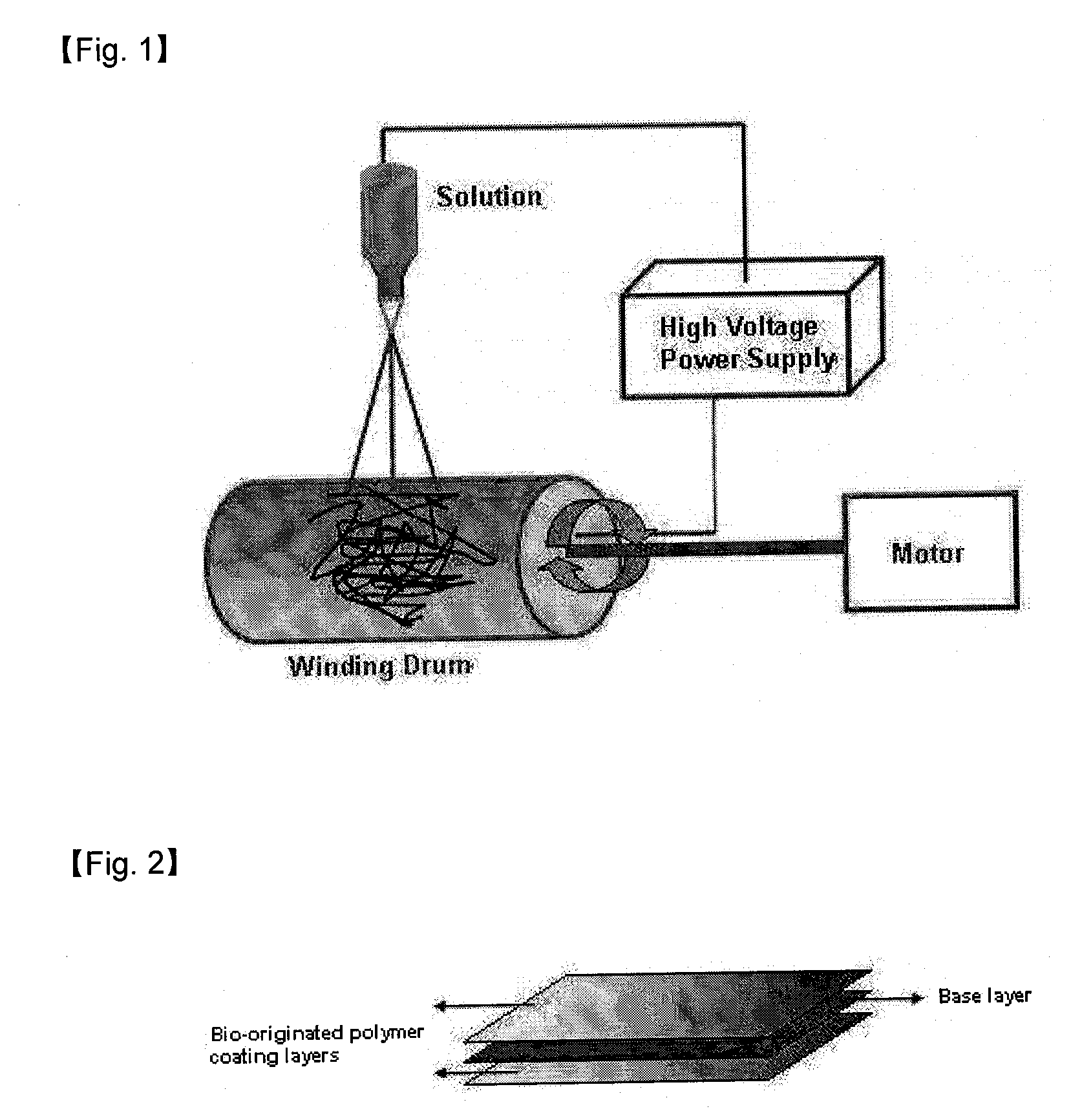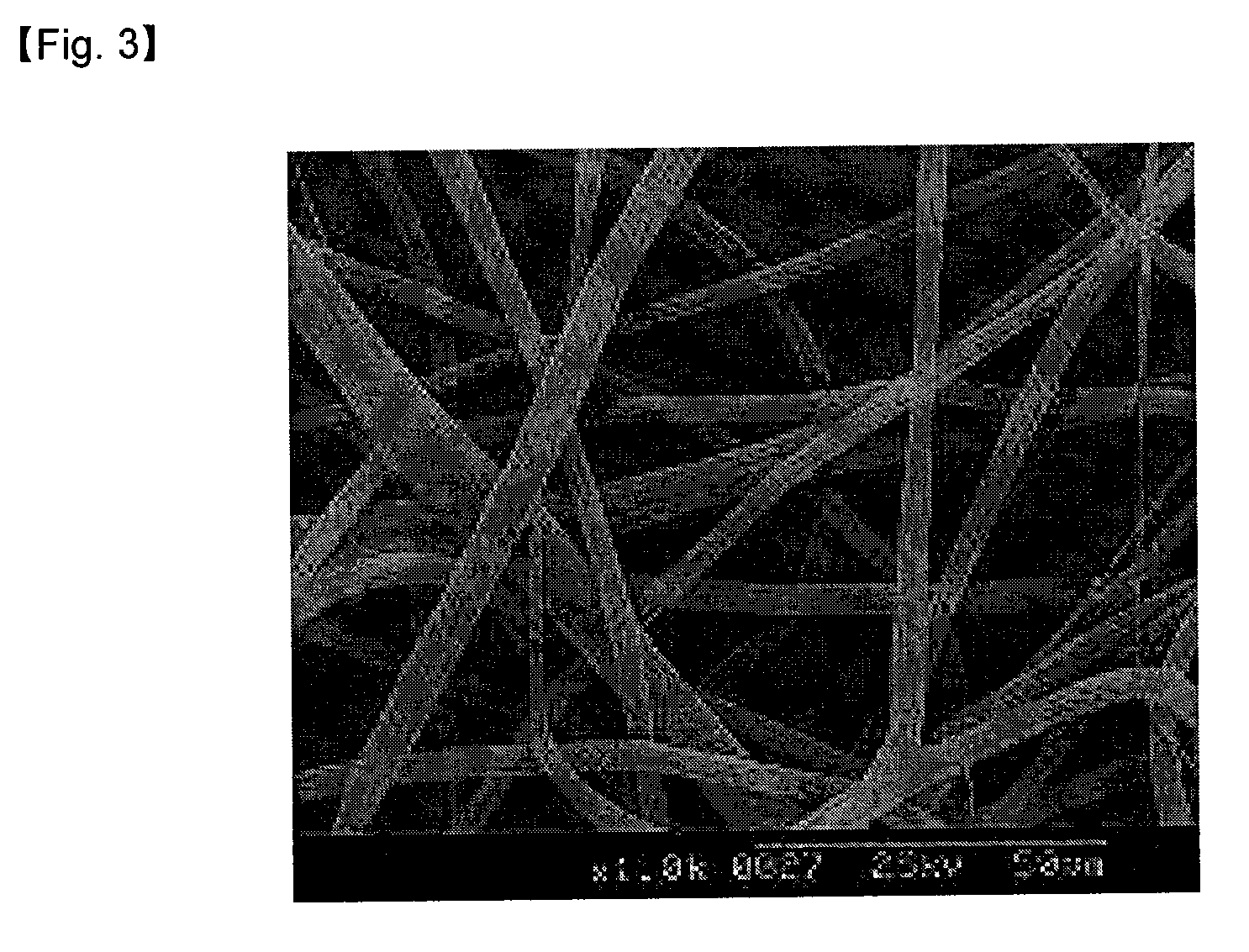Multi-Layered Antiadhesion Barrier
- Summary
- Abstract
- Description
- Claims
- Application Information
AI Technical Summary
Benefits of technology
Problems solved by technology
Method used
Image
Examples
examples 10 to 18
Preparation of Multi-Layered Anti-Adhesion Barriers
[0079]Multi-layered anti-adhesion barriers were prepared by coating a bio-originated polymer selected from polylactide-co-glycolide, poly ε-caprolactone, polylactide and hyaluronic acid on the nanofibrous structured base layers prepared in Examples 1 to 9 with different coating methods (see Table 2 below). Electrospinning was carried out using the electrospinning apparatus illustrated in FIG. 2 and a spinning solution in which the bio-originated polymer was dissolved at a voltage of 10 to 40 kV. Dip coating was carried out by dip coating the bio-originated polymer solution and drying the anti-adhesion barrier in an oven of 70° C. Casting was carried out by coating the bio-originated polymer solution on the base layer, casting it into a film and drying the anti-adhesion barrier. Spray coating was carried out by spraying the bio-originated polymer solution on the base layer and drying the anti-adhesion barrier in an oven of 70° C. for...
example 19
[0081]Poly(lactide-co-glycolide) (PLGA) having a lactide / glycolide ratio of 70:30 was dissolved in chloroform to 2 wt % and electrospun to form a nano structured base layer having a thickness of 60 μm. Subsequently, hyaluronic acid (HA) was dissolved in distilled water to 1 wt %, adjusted to pH 1.5 with 1 N HCl, uniformly coated on the nano structured base layer by casting to form a polymer layer having a thickness of 50 μm thickness. The procedure of freezing at −20° C. for 22 hours and thawing at 25° C. for 2 hours repeated twice. A multi-layered anti-adhesion barrier was obtained following neutralization with PBS, washing and freeze drying.
example 20
[0082]Dissolved HA was coated on the nano structured base layer of PLGA prepared in Example 19 and dried to prepare a PLGA / HA film. Subsequently, 1-ethyl-3-(3-dimethylaminopropyl)carbodiimide (EDAC), which is the crosslinking agent for HA, was added to a 90:10 (w / w) mixture of ethanol and water. The PLGA / HA film was immersed in the resultant solution and dried to obtain a multi-layered anti-adhesion barrier.
PUM
| Property | Measurement | Unit |
|---|---|---|
| Pore size | aaaaa | aaaaa |
| Pore size | aaaaa | aaaaa |
| Pore size | aaaaa | aaaaa |
Abstract
Description
Claims
Application Information
 Login to View More
Login to View More - R&D
- Intellectual Property
- Life Sciences
- Materials
- Tech Scout
- Unparalleled Data Quality
- Higher Quality Content
- 60% Fewer Hallucinations
Browse by: Latest US Patents, China's latest patents, Technical Efficacy Thesaurus, Application Domain, Technology Topic, Popular Technical Reports.
© 2025 PatSnap. All rights reserved.Legal|Privacy policy|Modern Slavery Act Transparency Statement|Sitemap|About US| Contact US: help@patsnap.com



